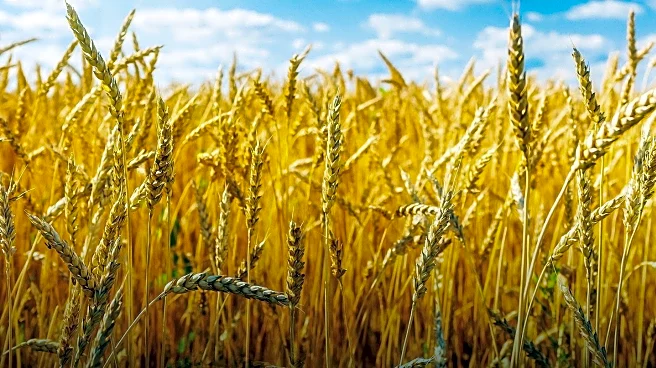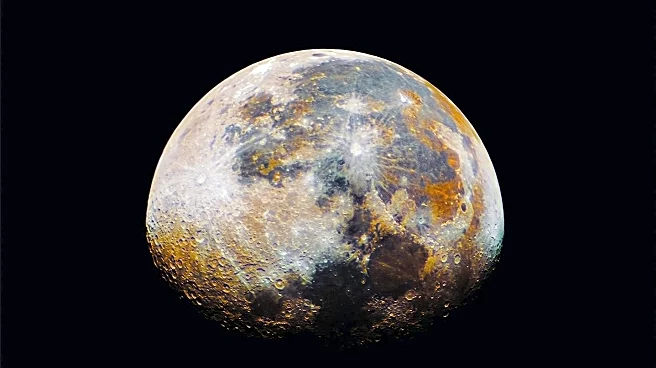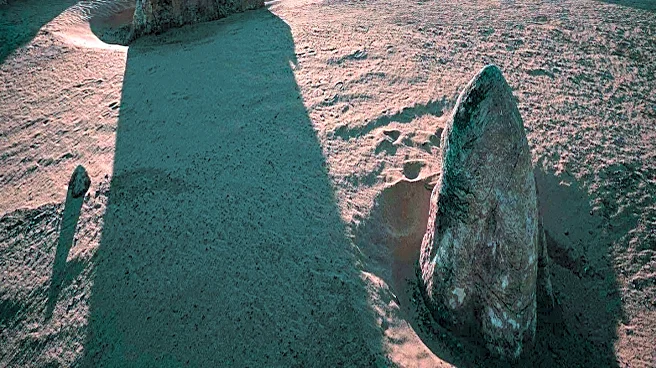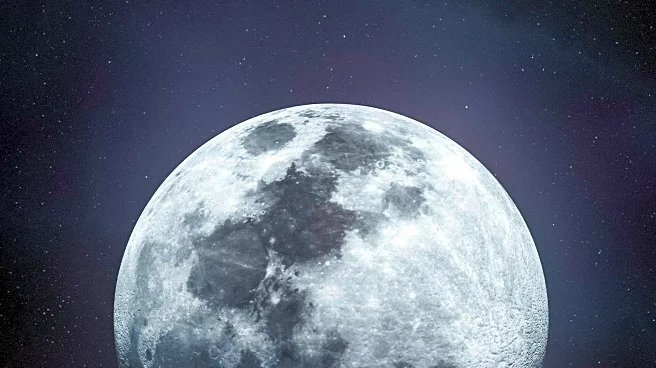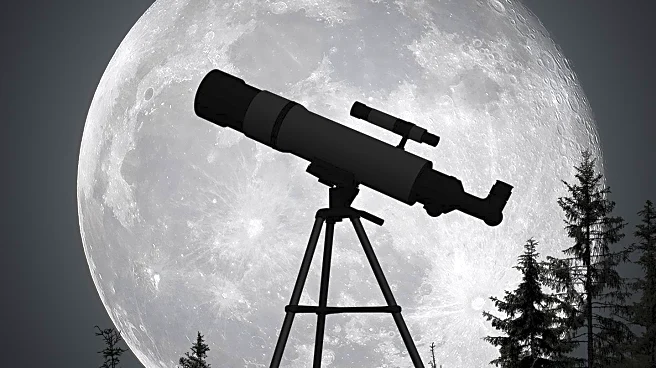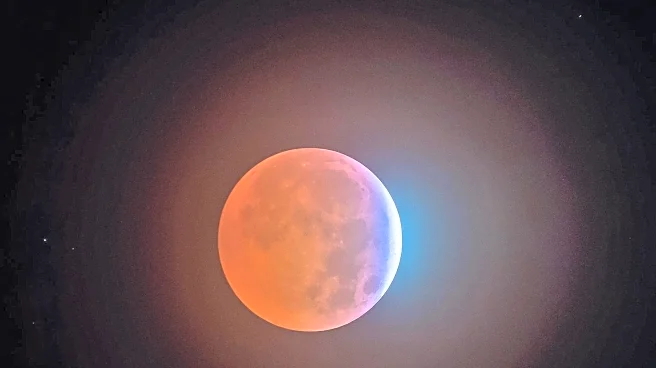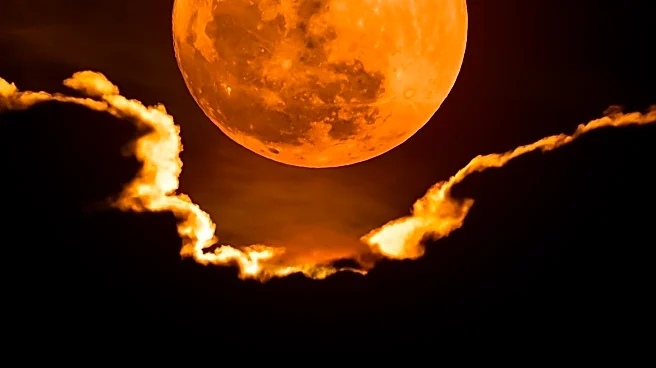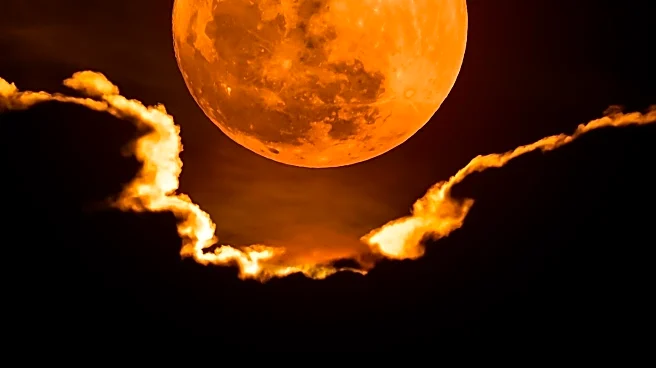What's Happening?
On October 6, the night sky over Daytona Beach and Flagler will be illuminated by a harvest supermoon, a phenomenon where the full moon appears larger and brighter due to its proximity to Earth. This supermoon coincides with the harvest moon, which is the full moon closest to the autumn equinox. The moon will reach its peak visibility at 11:48 p.m. Eastern time, offering sky watchers an extended period of bright moonlight. The harvest moon is historically significant for providing consistent moonlight for harvesting. This event marks the first of three supermoons in 2025, with subsequent occurrences in November and December.
Why It's Important?
The harvest supermoon offers a unique opportunity for residents and visitors in Daytona Beach and Flagler to experience a natural spectacle. Such celestial events can boost local tourism, as people seek optimal viewing spots in areas with low light pollution. The supermoon also serves as an educational moment, encouraging interest in astronomy and natural sciences. Additionally, the event can foster community engagement, with local parks and scenic areas becoming gathering spots for moon watchers. The visibility of the supermoon may also inspire photographers and artists, contributing to cultural and creative activities in the region.
What's Next?
Following the October supermoon, residents and visitors can anticipate two more supermoons in November and December. Local tourism boards and businesses may capitalize on these events by organizing viewing parties or educational programs. Efforts to promote dark sky locations could enhance the experience for sky watchers, while also raising awareness about light pollution. As interest in astronomy grows, educational institutions might offer courses or workshops related to celestial phenomena. The continued occurrence of supermoons presents ongoing opportunities for community engagement and tourism development.
Beyond the Headlines
The harvest supermoon highlights broader environmental and scientific themes, such as the impact of light pollution on night sky visibility. Efforts to preserve dark sky areas align with global initiatives to reduce light pollution and protect natural habitats. The event also underscores the importance of scientific literacy, encouraging public interest in astronomy and space exploration. As communities gather to witness the supermoon, there is potential for fostering a deeper appreciation for natural phenomena and the interconnectedness of Earth and space.

